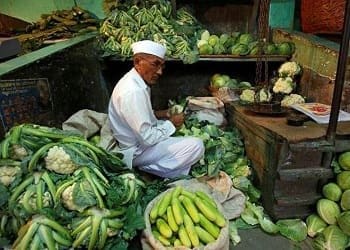Data released by the NSO on Wednesday showed retail inflation as measured by the consumer price index (CPI) rose an annual 4.6% in October, faster than the 4% recorded in the previous month and higher than the 3.4% in October 2018. The surge was largely led by food prices, the index for which shot up to 7.9% in October from 5.1% in the previous month.
Retail inflation accelerated to a 16-month high in October as some food prices soared, adding to the spate of data, which has bared the pressure points in Asia’s third-largest economy. Data released by the National Statistical Office (NSO) on Wednesday showed retail inflation as measured by the consumer price index (CPI) rose an annual 4.6% in October, faster than the 4% recorded in the previous month and higher than the 3.4% in October 2018.
The surge was largely led by food prices, the index for which shot up to 7.9% in October from 5.1% in the previous month. Vegetable prices soared 26.1% in October, while pulses and products rose 11.7%. Meat and fish prices touched double-digit levels at 9.8% during the month. Economists said the surplus rainfall in some states hurt crops and has impacted food prices due to supply disruption. “Five states, namely Rajasthan, Madhya Pradesh, Maharashtra, Gujarat and Karnataka bore the brunt of excess rainfall in 2019 and were affected by severe flood. This surplus rainfall during the month of August and September has seriously damaged many kharif crops. Going forward, thus, food and vegetable prices could remain elevated and inflation prints in November still may be on the higher side due to the low base in 2018,”
“We expect a December rate cut, but beyond December it will be a close decision (as inflation prints beyond October will remain elevated). Thus, it will be better if the rate cut is front-loaded in December,” said Ghosh, adding, even as food inflation will remain elevated, core CPI will go below 3%. A raft of data in recent months have pointed to slowing down of the economy. Latest data showed industrial output contracted to an eight-year low of 4.3%. Most economists said the second quarter gross domestic product data, which will be released later during the month, is expected to show further weakness in the economy and could go below the 5% mark.

